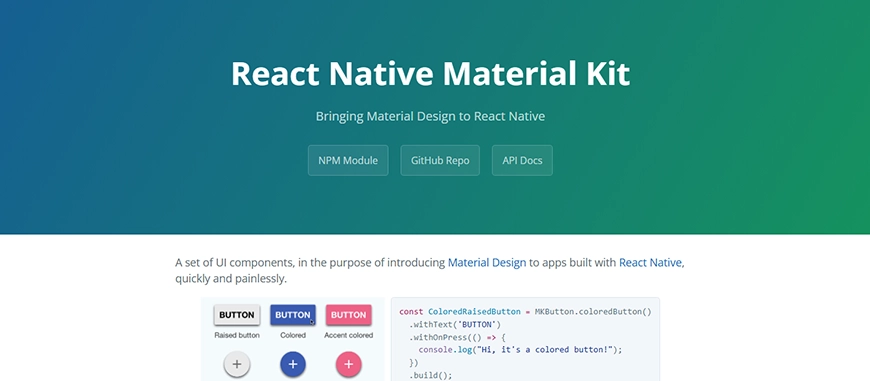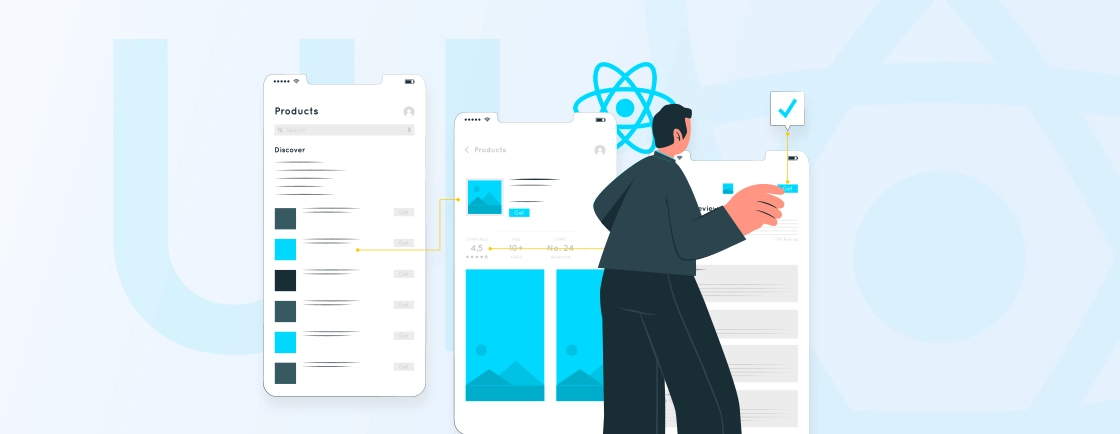Table of Contents
When it comes to building a cross-platform app, React Native development is the way to go. With it, you can write code once and deploy it on both iOS and Android without wasting time and resources. To that end, the right React Native libraries can make a real difference between a good app and a great one.
These libraries can help improve the development and final quality with everything from smooth animations to secure authentication. With them, you can optimize the UI, manage state, integrate APIs, and much more.
So through this blog, I’ll list out the top libraries preferred by the React Native experts to build the best cross-platform apps.
What is a React Native Library?
A React Native library is a pre-built collection of reusable code components that solve common development challenges—saving time, reducing errors, and ensuring consistency.
Instead of writing complex functionality from scratch, these libraries can help handle tasks like navigation, state management, animations, API calls, and UI design.
For example:
- Navigation: Libraries like React Navigation simplify screen transitions.
- State Management: Redux or MobX help manage app-wide data efficiently.
- UI Components: NativeBase or UI Kitten provide ready-made, customizable elements.
All in all, these libraries are meant to help accelerate development while maintaining performance and scalability.
Top React Native Libraries for Cross-platform Apps
When it comes to building the best-quality cross-platform apps, knowing the top React Native libraries makes all the difference. Here are a few popular options to consider.
React Native Reusables

React Native Reusables (RNR) is a growing collection of modular, production-ready components designed to speed up cross-platform development. With pre-built solutions for navigation, state management, and UI patterns, RNR eliminates boilerplate code while ensuring consistency.
It’s for the developers who want to focus on app logic rather than reinventing the wheel.
Lottie for React Native

Lottie is a React Native library to bring animations to life on the mobile app. This library renders Adobe After Effects animations in real-time using JSON files. It ensures smooth, lightweight, and scalable motion design.
This library is ideal for loading indicators, micro-interactions, and dynamic UI enhancements. It bridges the gap between designers and developers without compromising performance.
Gluestack UI

Gluestack UI is a modern, accessible component library built for React Native and web. With a focus on customizing and theming, it offers a flexible design system that adapts to any project. Its modular structure and TypeScript support make it a strong choice for teams prioritizing scalability and maintainability in their design workflow.
Ignite CLI

Ignite CLI is more than a library—it’s a powerhouse React Native boilerplate generator. With built-in best practices, plugins, and integrations (like MobX and React Navigation), it jumpstarts development while enforcing clean architecture.
Ideal for startups and enterprises, Ignite reduces setup time and ensures a solid foundation for scalable apps.
React Native UI Kitten

UI Kitten is a customizable UI framework with 30+ components following Eva Design System principles. It supports dark/light themes out of the box and allows deep styling via a theming engine.
It’s perfect for developers who need a cohesive, design-forward component library without sacrificing flexibility.
React Native Material Kit

For Material Design enthusiasts, React Native Material Kit offers pre-styled components like buttons, cards, and sliders. It simplifies implementing Google’s design language while keeping performance optimized. Though no longer actively maintained, it remains a lightweight choice for simple projects.
React Native Material UI

This library delivers Material Design components with a focus on modularity and theming. Unlike heavier alternatives, it’s performant and integrates seamlessly with Redux. Its declarative API makes it easy to customize components while adhering to Material guidelines.
Material Kit React Native

Creative Tim’s Material Kit provides polished, ready-to-use components for admin dashboards and mobile apps. With pre-built templates and detailed docs, it’s a time-saver for developers who need a professional look without extensive design work.
React Native Vector Icons

A staple in React Native projects, Vector Icons supports 3,000+ icons from Font Awesome, Material Symbols and Icons, and more. It’s lightweight, easy to style, and works seamlessly with navigation bars, buttons, and lists—making it indispensable for UI polish.
Tamagui

Tamagui merges a UI kit with an optimized styling system, offering atomic CSS-like performance for React Native. Its compiler-driven approach reduces runtime overhead, making it ideal for high-performance apps with complex theming needs.
React Native Elements

This popular library provides cross-platform UI components with a unified API. From badges to overlays, it balances customization and ease of use. That makes it a go-to for developers who want consistency across iOS and Android.
React Native Mapview

For location-based apps, React Native Maps delivers robust mapping with native performance. It supports markers, polygons, and even Apple/Google Maps-specific features. That makes it the gold standard for geospatial functionality.
Each library addresses unique needs—whether it’s UI consistency, animation, or rapid prototyping. So you need to choose the right one based on the project scale, design requirements, and performance goals.
And if you want custom functionalities for your application, connect with our dedicated React Native app development company.
Benefits of Using a Component Library in React Native
Component libraries are among the most essential tools for React Native, helping them add key features with relative ease. These libraries offer pre-built, reusable UI elements that streamline mobile app development.
Faster Development
Instead of coding buttons, cards, and navigation from scratch, component libraries provide ready-made, customizable elements—cutting development time significantly.
Consistent UI/UX
Libraries like UI Kitten or Gluestack enforce design system principles, ensuring visual harmony across screens and platforms.
Cross-Platform Compatibility
Most libraries are optimized for iOS and Android, reducing platform-specific bugs and ensuring a uniform user experience.
Performance Optimized
Well-maintained libraries (e.g., Tamagui) use efficient rendering techniques, minimizing overhead and boosting app speed.
Easier Maintenance
Updates and bug fixes are handled by the library maintainers, reducing long-term technical debt.
Scalability
Modular components adapt to growing feature sets, making it easier to scale apps without refactoring entire UIs.
With these libraries, developers can focus on core functionality rather than reinventing the wheel. You can deliver more polished mobile apps faster and more efficiently.
Let’s Conclude
The right React Native library can help build a high-quality, performance app–without reinventing the wheel. Something like Lottie can help with sleek animation, while UI Kitten can help with polished UI components. And a React Native library like Ignite CLI can make state management more efficient.
The best library for your project depends on your specific needs—whether it’s speed, customization, or scalability. First, experiment with a few and see how they can make the development process faster, more efficient.
If you need custom libraries tailored to your app’s functionality, hire React Native app developer to build scalable, feature-rich solutions that align with your project requirements.
FAQs on React Native Libraries
Why should I use React Native libraries?
React Native libraries provide pre-built, optimized solutions for common app development tasks—saving time, reducing bugs, and ensuring best practices. Instead of coding complex functionalities (like navigation or animations) from scratch, you can integrate reliable, community-tested tools.
Are these libraries compatible with Expo?
Most work with Expo, but some (especially those requiring native code) may need a custom dev client or ejection. Always check the library’s Expo compatibility notes.
Can I customize library components?
Most libraries (like UI Kitten or Gluestack UI) support theming and style overrides. Check their docs for props like theme or style.
What if a library is deprecated?
Look for alternatives with similar functionality (e.g., Material Kit → Gluestack UI) or fork the repo if you must maintain it yourself.
Build Cross-Platform React Native Apps
Discover how to create cross-platform mobile applications using React Native.




